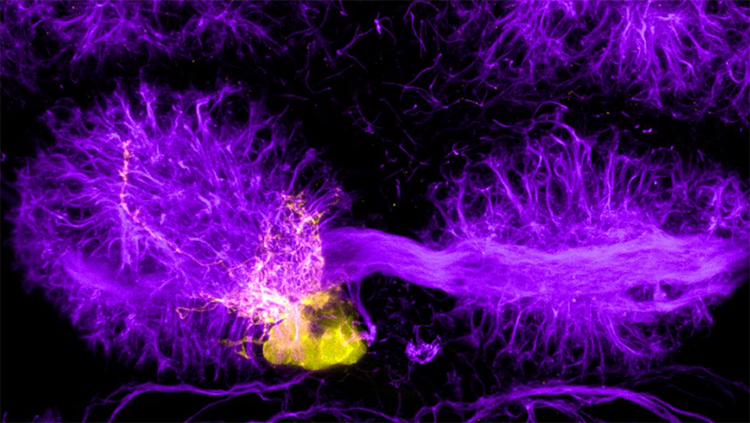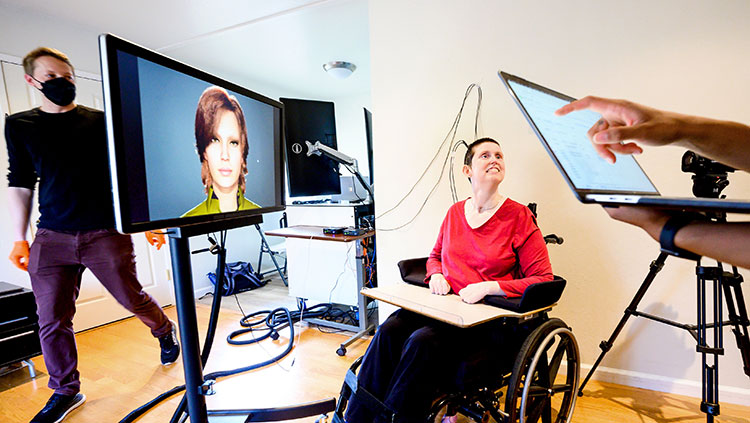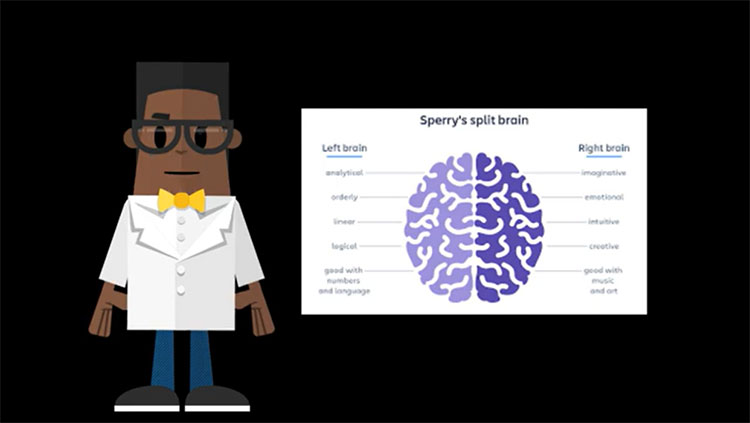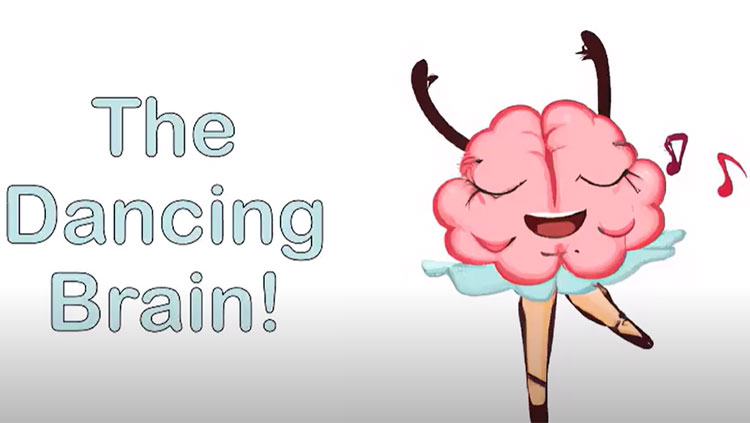Telling Left From Right
- Published6 Nov 2017
- Reviewed6 Nov 2017
- Author Charlie Wood
- Source BrainFacts/SfN

Evolutionarily speaking, asymmetry is a virtue. Species that divvy up tasks between the left and the right halves of the brain eat more, get eaten less, and remember longer. In most humans, for example, the left hemisphere is better at handling speech, while the right hemisphere better recognizes melodies. Studies have suggested that specializing makes these tasks more efficient. The specific ways in which brains develop this imbalance remain mysterious, but the transparency of young zebrafish lets scientists literally shine a light on the process.
Asymmetric features include the habenular and parapineal organs, seen here in purple and yellow respectively. The left habenula (which helps control fear) is about a fifth larger than the right in young zebrafish, while another organ called the parapineal develops only on the left. When scientists create symmetry surgically, the zebrafish grow up less curious and more anxious.
CONTENT PROVIDED BY
BrainFacts/SfN
Also In Anatomy
Trending
Popular articles on BrainFacts.org


















